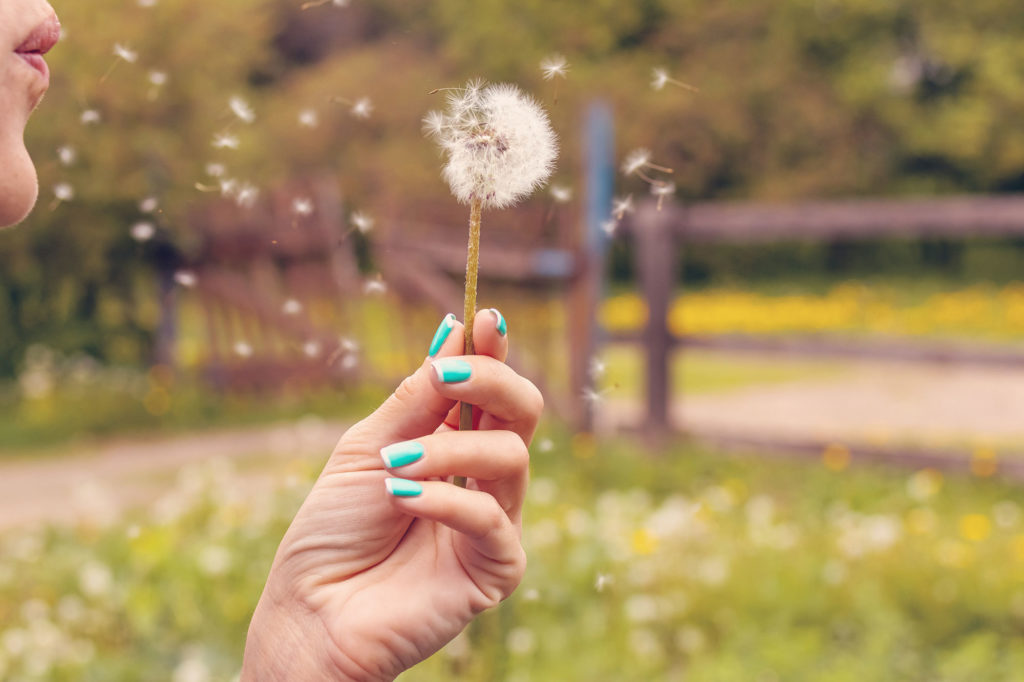10 ways to tackle hayfever and stay running

Artem Beliaikin on Unsplash
Struck down with a streaming nose and itchy eyes? Here are ten tips to stay running when you have hayfever.
“If I don’t manage my hay fever carefully, it can seriously affect my performance on the track,” GB athlete Marlon Devonish says. Despite having symptoms on the more severe side of the scale, the sprinter explains how he hasn’t let hayfever rule his life and he highlights how, when managed carefully, sport can continue when the summer sniffles strike.
Hayfever is a type of allergic rhinitis caused by an overreaction of the body’s immune system to pollen. It causes inflammation inside the nose and it can affect the sinuses, eyes and throat too. Around 20-25% of us suffer from it in the UK, one of the highest prevalence rates in the world, and you’re more likely to suffer from it if you have a history of asthma or eczema in your family. While there are medications to alleviate the symptoms on the market, there are ways to help yourself too. Here are ten tips to keep symptoms under control.
1. Keep an eye on the pollen level
Make it part of your early morning routine to watch the pollen forecast on TV or check the pollen count online before you head outdoors. There are also pollen count apps which can warn you when it’s a particularly high pollen day in your area. Typically most people get symptoms when the pollen count is over 50, though it varies between individuals. The pollen forecast is typically calculated as:
Low: fewer than 30 grains of pollen in every cubic metre of air
Moderate: 30-49 grains of pollen in every cubic metre of air
High: 50-149 grains of pollen in every cubic metre of air
Very high: 150 or more grains of pollen in every cubic metre of air
2. Work out which pollens you’re allergic to
Different plants release their pollen into the atmosphere at different times of the year so you can sometimes work out what triggers your symptoms and take steps to avoid your nasal nemesis. The vast majority of us – 95% – are allergic to grass pollen, and 25% to tree pollens such as ash, birch and oak. Take a look at the interactive pollen timeline on the Benadryl website to see what trees and grasses pollenate when. Typically:
Tree pollen is earlier in the year, starting in March
Grass pollen is June – August
Weed pollen is released any time from early spring to late autumn.
3. Avoid busy, built-up roads
With fewer green spaces, it might seem strange that hayfever is twice as common in cities than in the country but the answer lies in air pollution. Fumes from cars can trigger or aggravate symptoms so main roads are best avoided. Parks are potent with pollen too so give these a wide berth. So where can you run if your usual stomping ground is off limits? Research shows that air pollution drops significantly 300 metres away from main roads so plan your running routes wisely and choose less built up areas. If you live in London, try running along the Thames path where lower air pollution and reduced pollen will ease symptoms.
4. Make a beeline for the beach
If you’re lucky enough to live by the sea, you’re in a perfect spot to beat streaming eyes. Coastal areas typically have lower levels of air pollution because sea breezes blow the pollen inland.
5. Wash away the pollen
Pollen is pesky. It gets everywhere, sticking to your skin and hair and clinging to clothing. Get into a habit of showering and washing your running gear after every run and avoid drying your washing on a clothes-line outside.
6. Run at lunchtime
Plants release pollen early in the morning and late in the afternoon yet these are often the most common times we choose to run, so you may have to shuffle your running schedule around to suit lower pollen levels. During the daytime pollen levels are usually at their lowest from roughly 11 – 4pm so try running at lunchtime.
7. Wear sports sunglasses
If you suffer from itchy eyes, sunglasses will be prove useful, helping to prevent pollen coming into contact with the eye area while you’re running. Wrap-around designs are especially effective.
8. Apply Vaseline to other areas
Besides combating chafing, runner’s best friend Vaseline has another use in the summer by helping to combat pollen. Apply petroleum jelly or an equivalent balm around the edge of each nostril to trap or block pollens from entering your nose and preventing a reaction. Be careful of sunburn though!
9. Invest in an air filter for indoors
If you find your sleep is affected, a good air filter can help. Choose a filter which is proven to trap small particles.
10. On high pollen days…
All is not lost: there’s always the indoor treadmill as a last resort.

